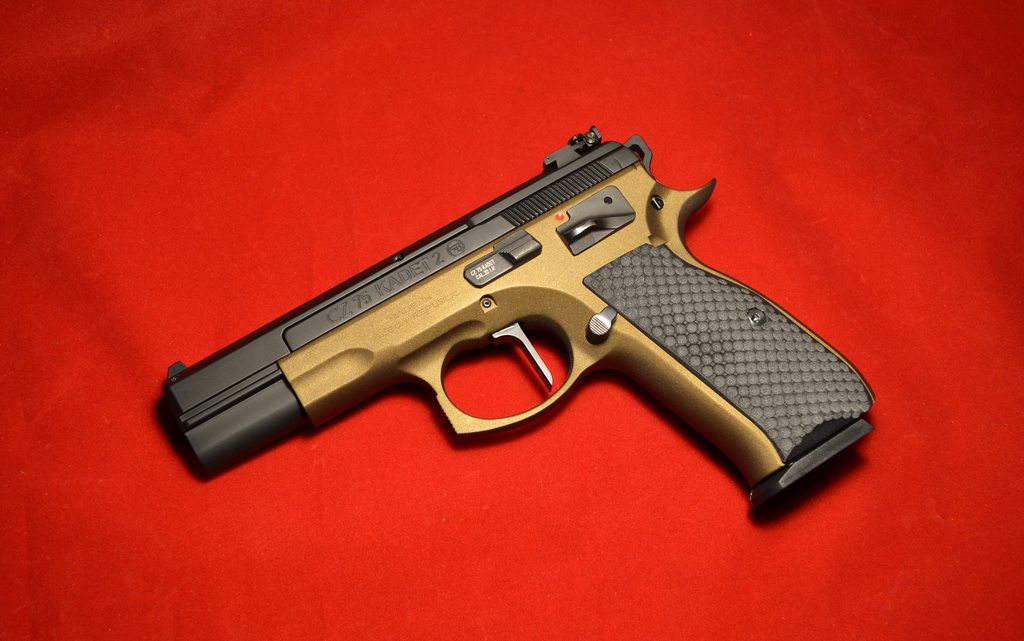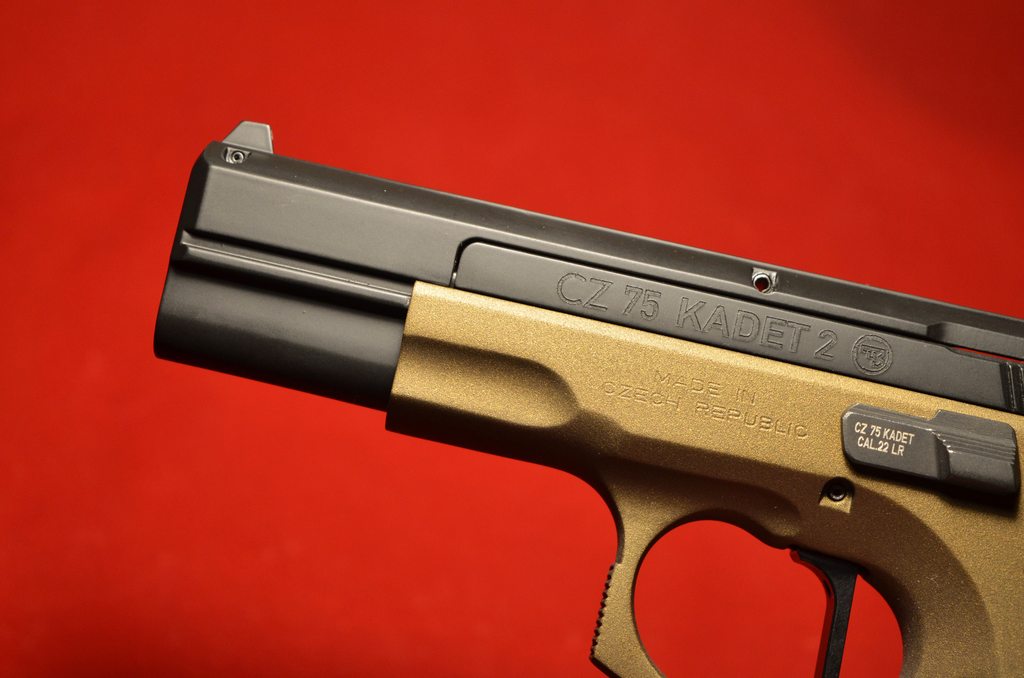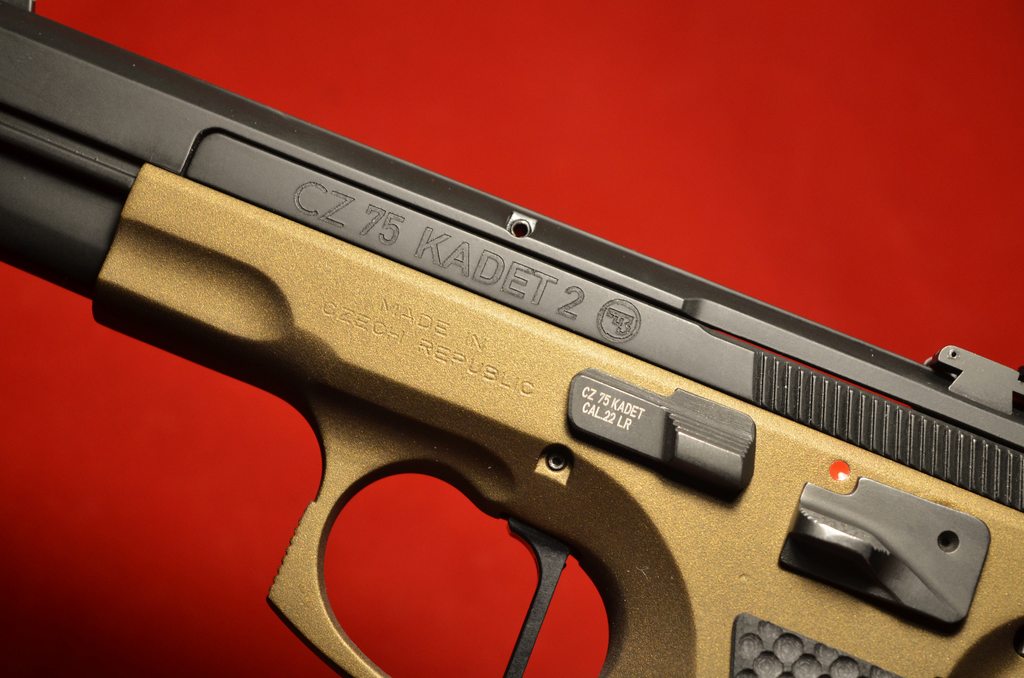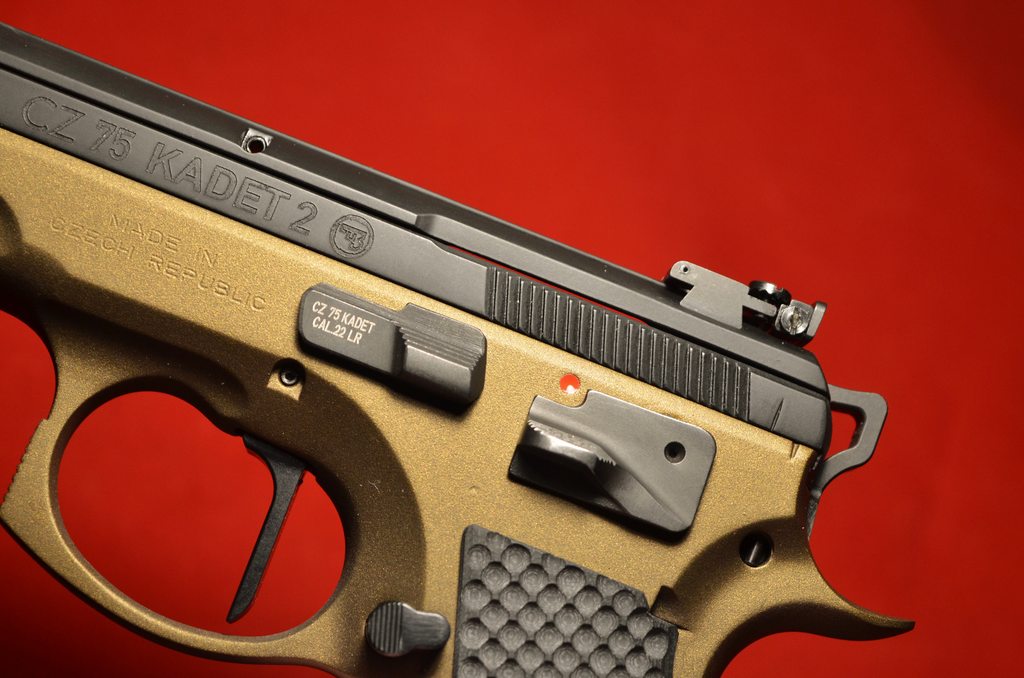Very nice looking pistol, and I bet she's a shooter too.
You are using an out of date browser. It may not display this or other websites correctly.
You should upgrade or use an alternative browser.
You should upgrade or use an alternative browser.
This site may earn a commission from merchant affiliate
links, including eBay, Amazon, and others.
Picked up a Kadet .22LR conversion kit off of eBay during the last 15% discount offer. Apparently the versions of the kits that are currently being produced now have a full width slide profile similar to the, SP01, SA, and Shadow slides. It makes fitting the slide a little more difficult, but the upper looks much better IMO, especially if installed on a full dust cover pistol like an SP01. I plan to remove the dots on the rear LPA sight and install a fiber optic front sight in the near future. The set of grips that are installed in the photo below are LOK Shadow 2 palm swell Bogies.








Last edited:
On the custom Caspian that I had made I never had any chips in the ejection port area and it was Cerakote. It got a lot of rounds through it too, but it could also be they flew clear of it. There's no magic to a good Cerakote finish but the prep and cleaning are critical. If these outfits would just get a good alkaline cleaner similar to Oakite and handle them properly before spraying there would never be an issue.
Good looking gun!
Good looking gun!
On the custom Caspian that I had made I never had any chips in the ejection port area and it was Cerakote. It got a lot of rounds through it too, but it could also be they flew clear of it. There's no magic to a good Cerakote finish but the prep and cleaning are critical. If these outfits would just get a good alkaline cleaner similar to Oakite and handle them properly before spraying there would never be an issue.
Good looking gun!
Thanks Shadow.
I was concerned that the chipping in the ejection port was not typical for cerakote that has been applied properly. I originally had to ask BLA strip and recoat the slide as it was obvious that they just lightly media blasted the factory polycoat and sprayed directly over it. All of the blemishes that were previously present in the factory finish were still there after the first attempt at coating the slide. That honestly doesn't give me much confidence that short cuts weren't taken during the prepping process. As far as I was told, their standard process is to strip back to a bare slide and frame and soak the parts in an acetone bath, bake after the bath, and place them back in an acetone bath again prior to coating.
I believe that IS the correct method per Cerakote, but even they could use some help on their application instructions.Thanks Shadow.
I was concerned that the chipping in the ejection port was not typical for cerakote that has been applied properly. I originally had to ask BLA strip and recoat the slide as it was obvious that they just lightly media blasted the factory polycoat and sprayed directly over it. All of the blemishes that were previously present in the factory finish were still there after the first attempt at coating the slide. That honestly doesn't give me much confidence that short cuts weren't taken during the prepping process. As far as I was told, their standard process is to strip back to a bare slide and frame and soak the parts in an acetone bath, bake after the bath, and place them back in an acetone bath again prior to coating.
I'm just anal about paint coatings because of my experience dating back to high school and later in aerospace with paints, epoxy sealants, etc. In high school body shop class we went through the DuPont certification program and they stressed over and over and over proper cleaning and preparation. One cleaning won't get it done. 1) Soap & water, rinse. 2) a solvent wash that was actually a mix of solvents to remove waxes and environmental stuff like tree sap for instance. 3) was an organic solvent like acetone, lacquer thinner, etc. Only then did you apply primers, paints, etc. This carried through in a major way in the aerospace where you have to do adhesion, impact, flexibility and abrasion testing as part of your inspection process and certification process.
I like alkaline cleaning like Oakite which is also used in hot bluing because it's just flat works. The stuff we used was a white powder and it looked and smelled like laundry detergent. Which it actually was, just on steroids. The nominal Ph when mixed was 12.5, so it was rather "warmish", but wouldn't hurt most metals at all. We had parts that had dropped off our racks into the bottom of our 6' deep tanks and we'd pull them out 3 years later. They didn't get etched to dust. Etched yes, but still there after all that time. The reason they probably don't say to use it is it has to be heated. Our tanks ran from 195 to 210 degrees. So a Cerakote applicator would need that equipment too which would hurt their sales. Disposal isn't an issue other than taking it to a hazmat place for the contaminates on an industrial scale. I don't see how doing gun parts would ever be an issue, the stuff lasts for a really long time. It was a simple matter to add an acid to drop the Ph to be able to dispose of the solution. Just taking a part and wiping or soaking with a solvent isn't good enough, IMO.
Similar threads
- Replies
- 19
- Views
- 3K
North East OK
- For Sale
- Sale Price: 250$
- Replies
- 3
- Views
- 1K
Join the conversation!
Join today and get all the highlights of this community direct to your inbox. It's FREE!
- Curated content sent daily, so you get what's interesting to you!
- No ads, no large blocks of text, just highlights for easy digest
- It's all totally free!
Enter your email address to join:
Thank you for joining!
Already
a member? Click here to log in









